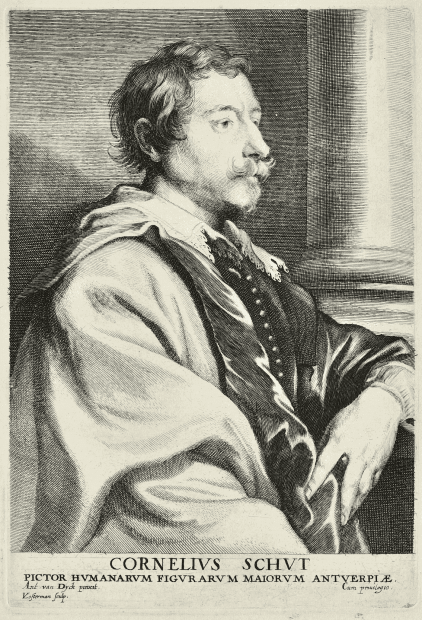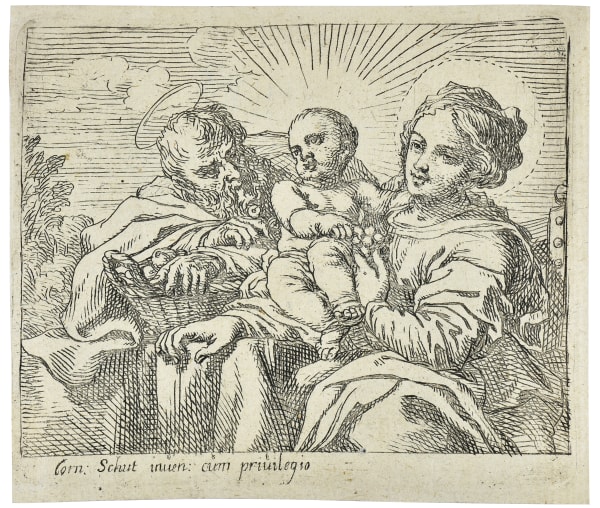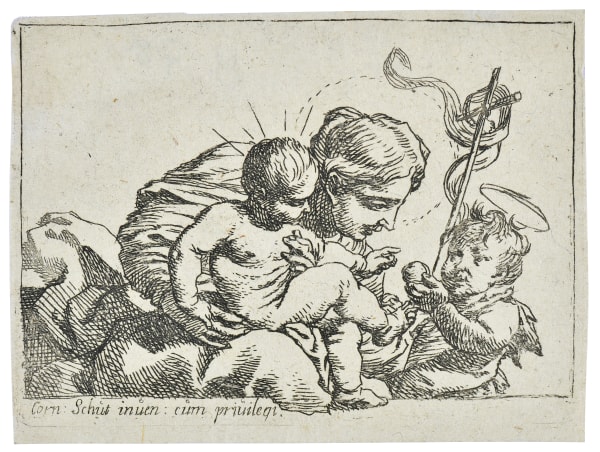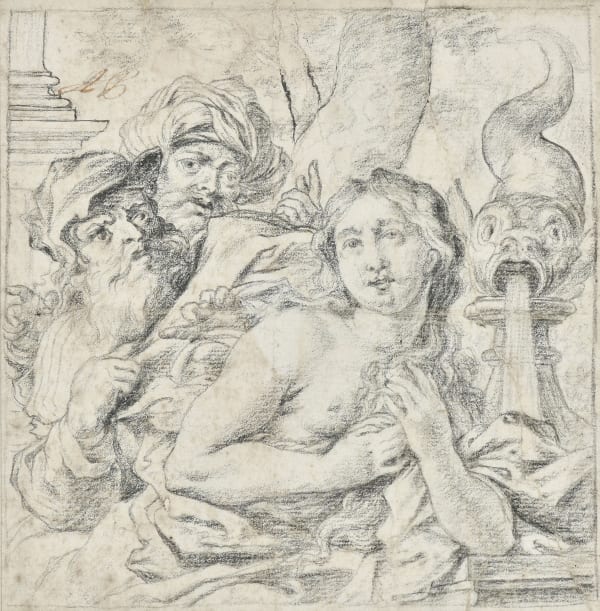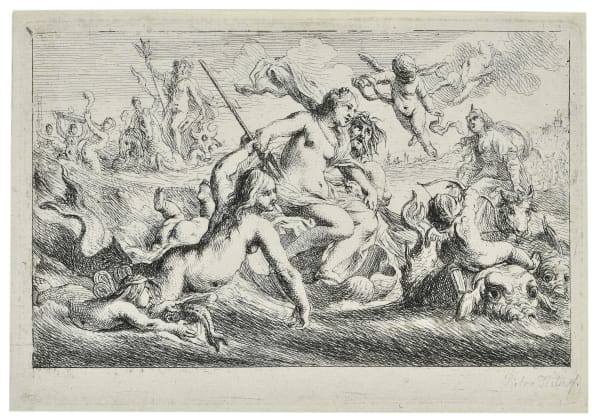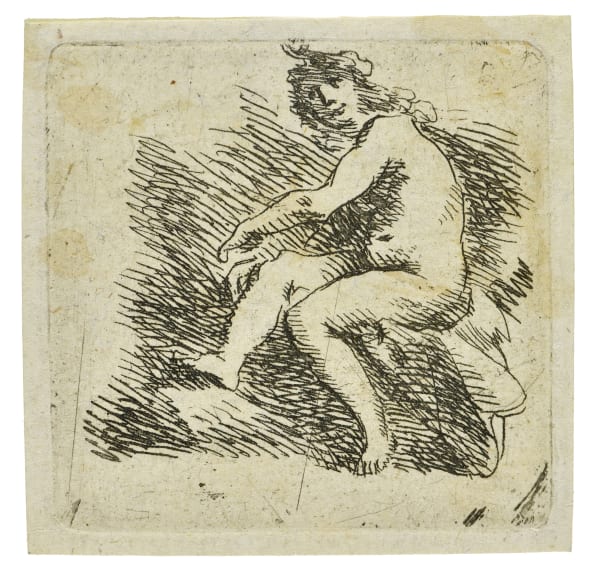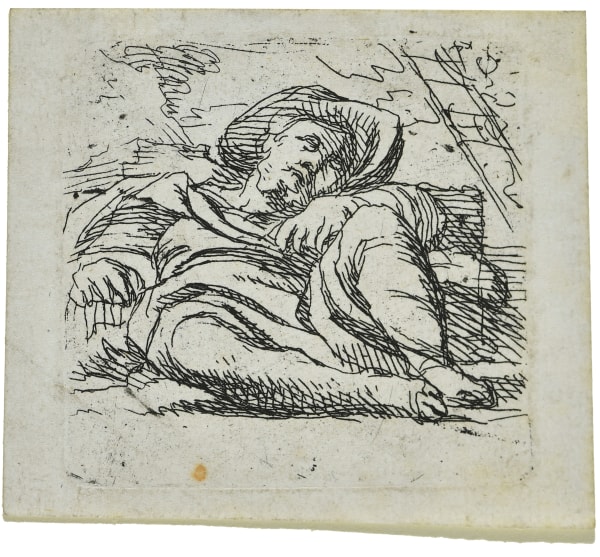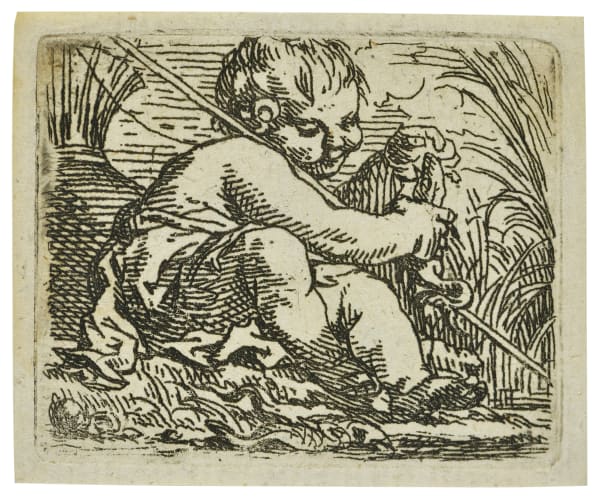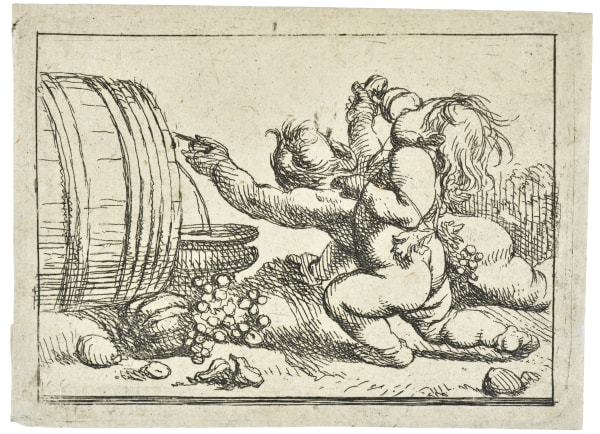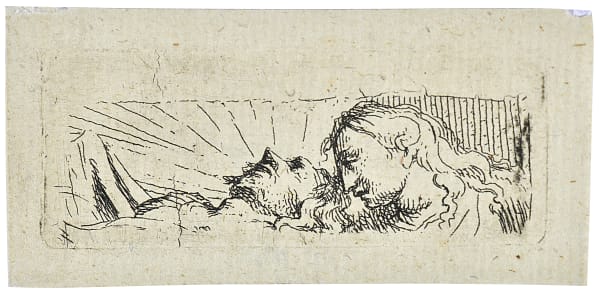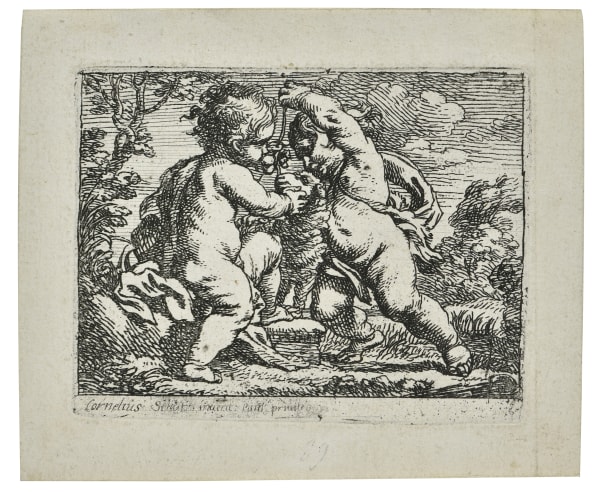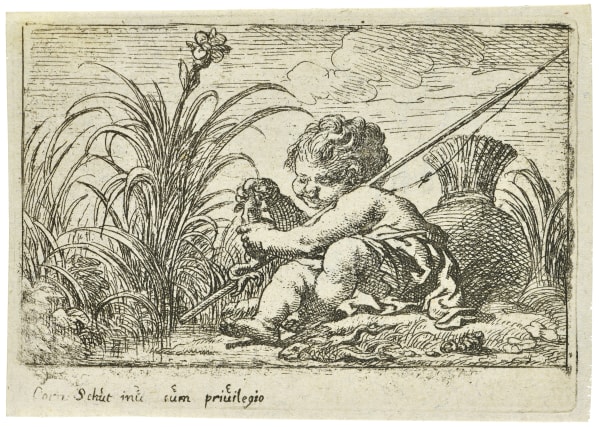-
'slechte voden [en] luttel werck'
On June 8 1643, the Lisbon-based art dealer André de Saintes wrote to his colleague in Antwerp, Guillermo Forchoudt: 'De stucken die ick ontboden heb moeten van Schut wesen. Ick wil die van anders niemant hebben. […] Synt my geen slechte voden daer ick vele gelts aen sal verlisen.' ('The pieces I have summoned must be by Schut. I want them from no-one else. […] Don't send me bad rags (i.e. canvases) on which I will lose a lot of money.') Upon receipt of the paintings however, de Saintes was not happy, as he wrote to Forchoudt on August 20 of the same year: 'De doecken van Sr Schut vinde dier, asloo luttel werck in hebben […]' ('The canvases by Sr Schut [I] find expensive, and also not worked enough […]') An art dealer complaining - how little has changed.
Managing contemporary artists seems always to have been a challenge. Therefore, when asked why I prefer dealing in old masters, I have often joked that dead artists are much less of a hassle. As a dealer, you buy and sell their work, end of story. However, even then, work by some artists seems to 'find' you more often than that by others. Over time, these artists become, in a way, part of the DNA of the gallery. An artist who has 'found' me in this way at various stages throughout my dealing career is the Antwerp baroque artist Cornelis Schut (1597 - 1655) whose work de Saintes was so eager to acquire. When the idea dawned on me a few years ago to organize a solo show on a Flemish old master - something rarely seen in a commercial gallery - Schut was therefore the obvious choice. For years I patiently collected all I could, read up on the artist and did research of my own. This exhibition is the culmination of those efforts, and Schut, who was an interesting figure as well as a versatile and very gifted draughtsman, proved himself a great subject for a monographic exhibition (his first ever, coincidentally.)
Of course, I would have loved to include even more works, such as tapestries (for which he sometimes produced designs) or more large-scale paintings, but I hope my efforts, however humble, have done him at least some justice. I am grateful to the private collectors as well as to the Rubenshuis who generously agreed to loan some key works, as well as to the authors of the catalogue accompanying the exhibition. Their erudition far exceeds mine, and I count myself lucky to have had them by my side in this endeavour. It has been my great pleasure to collect, research and present the following works. I hope you will derive at least as much pleasure from looking at them.
Tyr Baudouin
-

-
 Boreas abducting Orithyia, etching on laid paper.
Boreas abducting Orithyia, etching on laid paper. -
 Judith and Holofernes, oil on copper
Judith and Holofernes, oil on copper -
-
 Cornelis Schut (Antwerp 1597 - 1655)The Circumcisionoil on panel55 x 39,5 cm
Cornelis Schut (Antwerp 1597 - 1655)The Circumcisionoil on panel55 x 39,5 cm -
 Cornelis Schut (Antwerp 1597 - 1655)The Death of Saint Gertrudepen and brown ink, brush and wash on two joined sheets of laid paper; squared for transfer361 x 201 mm
Cornelis Schut (Antwerp 1597 - 1655)The Death of Saint Gertrudepen and brown ink, brush and wash on two joined sheets of laid paper; squared for transfer361 x 201 mm -
 Cornelis Schut (Antwerp 1597 - 1655)The Pièta with Saint John the Evangelistoil on panel36,5 x 29,5 cmON LOAN FROM A BELGIAN PRIVATE COLLECTION.
Cornelis Schut (Antwerp 1597 - 1655)The Pièta with Saint John the Evangelistoil on panel36,5 x 29,5 cmON LOAN FROM A BELGIAN PRIVATE COLLECTION.
-
-
The Holy Family
Ranging from large-scale paintings made on commission for grand altars to small (and cheap) devotional prints intended for a wider audience, Schut revisited the iconography of the Virgin and Child and that of the Holy Family throughout his career. The Holy Family with the Infant St John is a rare extant example of one of Schut's designs for a small devotional print, which could have formed part of a series with several other prints. The oil sketch for The Return of the Holy Family, which can be dated ca. 1635, is a beautiful example of how Schut combined both Italian and Flemish influences in his work. -
-
 Cornelis Schut (Antwerp 1597 - 1655)The Holy Familyetching on laid paper92 x 105 mm
Cornelis Schut (Antwerp 1597 - 1655)The Holy Familyetching on laid paper92 x 105 mm -
 Cornelis Schut (Antwerp 1597 - 1655)The Holy Family with the Infant Saint John the Baptistpen and brown ink, brush and wash on laid paper; laid down on an old mount82 x 82 mm
Cornelis Schut (Antwerp 1597 - 1655)The Holy Family with the Infant Saint John the Baptistpen and brown ink, brush and wash on laid paper; laid down on an old mount82 x 82 mm -
 Cornelis Schut (Antwerp 1597 - 1655)The Virgin and Child with the Infant Saint Johnetching on laid paper69 x 99 mm
Cornelis Schut (Antwerp 1597 - 1655)The Virgin and Child with the Infant Saint Johnetching on laid paper69 x 99 mm -
 Cornelis Schut (Antwerp 1597 - 1655)The Return of the Holy Family from Egyptoil on panel35 x 52,5 cm
Cornelis Schut (Antwerp 1597 - 1655)The Return of the Holy Family from Egyptoil on panel35 x 52,5 cm -
 Cornelis Schut (Antwerp 1597 - 1655)The Flight into Egyptblack chalk and white highlights on laid blue paper405 x 282 mm
Cornelis Schut (Antwerp 1597 - 1655)The Flight into Egyptblack chalk and white highlights on laid blue paper405 x 282 mm -
 Cornelis Schut (Antwerp 1597 - 1655)The Virgin and Childetching on laid paper51 x 82 mm
Cornelis Schut (Antwerp 1597 - 1655)The Virgin and Childetching on laid paper51 x 82 mm
-
-
Schut as a designer
During his time in Florence in 1627-28, Schut had designed various tapestry cycles for the Arazzeria Medicea, the Medici tapestry factory established by Cosimo I de Medici in 1546. Interestingly, an inventory of the Arazzeria from 1637 mentions a cartoon painted by Schut for a tapestry depicting Scipio Africanus, which may very well be related to our drawing. After his return to Antwerp, Schut still occasionally produced designs for tapestries, the most famous of which was a series of the Seven Liberal Arts, which can be dated to the late 1640's. Interestingly, a silver platter and ewer crafted by the silversmith Theodoor de Rasier which was owned by Rubens depicts a scene of Susanna and the Elders which has been connected to a print by Schut, suggesting he may have been involved in its design as well.
-
MODELLI & PRIMI PENSIERI
On November 3, 1645 the notary Ambrosius Sebille wrote up an appraisal of Schut's paintings and other possessions. The detailed inventory of his holdings which was attached included 'seven boeken van wit pampier dienende omme daerinne te teeckenen met eenige teekeningen daerinne' ['seven books of white paper for the purpose of drawing therein, within them some drawings']. Clearly Schut was a prolific draughtsman, although until recently only few drawings by him were known. This changed just over a decade ago when a cache of drawings by his hand was rediscovered in a French private collection, allowing us to understand and appreciate the artist more fully. Among these drawings were numerous designs for engravings, paintings and the occasional tapestry, but also quite a few freely executed 'primi pensieri' which do not seem to have any relation to another known work. These compositions, which are very appealing to modern eyes, give us a rare insight into the mind and creative process of the artist, and may be counted among his best work. -
-
 Cornelis Schut (Antwerp 1597 - 1655)Susanna and the Eldersgraphite and black chalk on laid paper153 x 195 mm
Cornelis Schut (Antwerp 1597 - 1655)Susanna and the Eldersgraphite and black chalk on laid paper153 x 195 mm -
 Cornelis Schut (Antwerp 1597 - 1655)Cimon & Iphigenia, from Bocaccio's Decamerone19 x 28,7 cmoil on paper, laid down on panelGIFTED IN 2021 BY TYR BAUDOUIN TO THE RUBENSHUIS, ANTWERP, IN HONOUR OF HIS GRANDPARENTS FRANS BAUDOUIN, HONORARY CURATOR OF THE MUSEUM, AND PAULA SMOLDERS.
Cornelis Schut (Antwerp 1597 - 1655)Cimon & Iphigenia, from Bocaccio's Decamerone19 x 28,7 cmoil on paper, laid down on panelGIFTED IN 2021 BY TYR BAUDOUIN TO THE RUBENSHUIS, ANTWERP, IN HONOUR OF HIS GRANDPARENTS FRANS BAUDOUIN, HONORARY CURATOR OF THE MUSEUM, AND PAULA SMOLDERS. -
 Cornelis Schut (Antwerp 1597 - 1655)Apollo & Daphnegraphite and pen and ink on paper220 x 284 mm
Cornelis Schut (Antwerp 1597 - 1655)Apollo & Daphnegraphite and pen and ink on paper220 x 284 mm -
 Cornelis Schut (Antwerp 1597 - 1655)The Rape of Europapencil on paper190 x 280 mm
Cornelis Schut (Antwerp 1597 - 1655)The Rape of Europapencil on paper190 x 280 mm
-
-
ART FOR ALL: The prints
In sixteenth- and seventeenth-century Flanders, even as religious and wordly authorities liberally commissioned important artworks to heighten their prestige at great expense while wealthy elites greedily indulged in the highly fashionable art of collecting, enjoyment and ownership of art was not limited to the lucky few. Even those less fortunate could - and did - decorate their walls with art, as was noted by astonished foreign visitors. Even in the humblest of homes they regularly encountered prints, as can indeed be seen in seventeenth-century interior scenes by genre painters like David II Teniers.
The medium of print provided a quick and easy way to produce and distribute copies of popular compositions. Prints could easily travel far and wide, and thus had the potential to disseminate the work of an artist across borders and even worldwide, as can be attested by the influence of Flemish painters on 17th- and 18th-century Latin-American artists, for instance. Artists like Rubens had their compositions engraved by others to further their brand name, while also making their art accessible to a wider range of people. After all, a print could be had for (sometimes relatively) modest sums.
Schut, being the only real Antwerp 'peintre-graveur' of the first half of the seventeenth century, engraved many of his works himself, although he also employed and trained several engravers. He produced reproductions of his paintings (this probably includes his Sine Baccho et Cerere friget Venus, although the painting is lost) but also made smaller prints, such as a series of devotional works, a series of capricci featuring frolicking putti engaged in a wide range of activities and a range of mythological prints.
-
Printed paintings
-
Capricci, mythology and small devotional prints
-
 Cornelis Schut (Antwerp 1597 - 1655)A Boy with his Dogetching on laid paper45 x 62 mm
Cornelis Schut (Antwerp 1597 - 1655)A Boy with his Dogetching on laid paper45 x 62 mm -
 Cornelis Schut (Antwerp 1597 - 1655)Dianaetching on paper57 x 58 mm
Cornelis Schut (Antwerp 1597 - 1655)Dianaetching on paper57 x 58 mm -
 Cornelis Schut (Antwerp 1597 - 1655)A Putto firing a Cannonetching on paper79 x 107 mm
Cornelis Schut (Antwerp 1597 - 1655)A Putto firing a Cannonetching on paper79 x 107 mm -
 Cornelis Schut (Antwerp 1597 - 1655)A sleeping Manetching on paper65 x 65 mm
Cornelis Schut (Antwerp 1597 - 1655)A sleeping Manetching on paper65 x 65 mm -
 Cornelis Schut (Antwerp 1597 - 1655)Christ at the Columnetching on laid paper48 x 78 mm
Cornelis Schut (Antwerp 1597 - 1655)Christ at the Columnetching on laid paper48 x 78 mm -
 Cornelis Schut (Antwerp 1597 - 1655)An Allegory of Vanityetching on paper63 x 52 mm
Cornelis Schut (Antwerp 1597 - 1655)An Allegory of Vanityetching on paper63 x 52 mm -
 Cornelis Schut (Antwerp 1597 - 1655)An Allegory of Water and Fire (2)etching on laid paper (2)45 x 58 mm (water);
Cornelis Schut (Antwerp 1597 - 1655)An Allegory of Water and Fire (2)etching on laid paper (2)45 x 58 mm (water);
55 x 55 mm (fire)
-
 Cornelis Schut (Antwerp 1597 - 1655)Three flying Puttietching on paper84 x 104 mm
Cornelis Schut (Antwerp 1597 - 1655)Three flying Puttietching on paper84 x 104 mm -
 Cornelis Schut (Antwerp 1597 - 1655)Two Children with a Flag and a Drumetching on laid paper41 x 118 mm
Cornelis Schut (Antwerp 1597 - 1655)Two Children with a Flag and a Drumetching on laid paper41 x 118 mm -
 Cornelis Schut (Antwerp 1597 - 1655)Two Children; one kneeling near a Fireetching on laid paper60 x 80 mm
Cornelis Schut (Antwerp 1597 - 1655)Two Children; one kneeling near a Fireetching on laid paper60 x 80 mm -
 Cornelis Schut (Antwerp 1597 - 1655)Hermesetching on laid paper92 x 78 mm
Cornelis Schut (Antwerp 1597 - 1655)Hermesetching on laid paper92 x 78 mm -
 Cornelis Schut (Antwerp 1597 - 1655)Two Puttietching on laid paper45 x 77 mm
Cornelis Schut (Antwerp 1597 - 1655)Two Puttietching on laid paper45 x 77 mm -
 Cornelis Schut (Antwerp 1597 - 1655)Two Putti drinking from a Wine Barreletching on laid paper75 x 102 mm
Cornelis Schut (Antwerp 1597 - 1655)Two Putti drinking from a Wine Barreletching on laid paper75 x 102 mm -
 Cornelis Schut (Antwerp 1597 - 1655)The dead Christ with St John the Evangelistetching on laid paper30 x 72 mm
Cornelis Schut (Antwerp 1597 - 1655)The dead Christ with St John the Evangelistetching on laid paper30 x 72 mm -
 Cornelis Schut (Antwerp 1597 - 1655)Diana and Actaeonetching on laid paper94 x 79 mm
Cornelis Schut (Antwerp 1597 - 1655)Diana and Actaeonetching on laid paper94 x 79 mm -
 Cornelis Schut (Antwerp 1597 - 1655)Two Putti feeding a Lambetching on paper100 x 128 mm
Cornelis Schut (Antwerp 1597 - 1655)Two Putti feeding a Lambetching on paper100 x 128 mm -
 Cornelis Schut (Antwerp 1597 - 1655)Varie Capricci di Corneli Schutetching on laid paper93 x 71 mm
Cornelis Schut (Antwerp 1597 - 1655)Varie Capricci di Corneli Schutetching on laid paper93 x 71 mm -
 Cornelis Schut (Antwerp 1597 - 1655)An Allegory of Water, Fire & Earth (3)etching on paper (3)70 x 97 mm (each)
Cornelis Schut (Antwerp 1597 - 1655)An Allegory of Water, Fire & Earth (3)etching on paper (3)70 x 97 mm (each)
-
 Cornelis Schut (Antwerp 1597 - 1655)Venus and Cupidetching on laid paper104 x 56 mm
Cornelis Schut (Antwerp 1597 - 1655)Venus and Cupidetching on laid paper104 x 56 mm -
 Cornelis Schut (Antwerp 1597 - 1655)Two Putti lighting a Cannonetching on laid paper40 x 75 mm
Cornelis Schut (Antwerp 1597 - 1655)Two Putti lighting a Cannonetching on laid paper40 x 75 mm
-
-
Schut's artistic legacy
On April 29 1655, after a productive career and a busy family life (he remarried in 1638 after the death of his first wife, and went on to have four more children), Schut passed away just weeks before his 58th birthday. The inventory of his artistic material, which was written up in 1664, lists thousands of works on paper and many dozens of copper print plates, attesting to the furious activity of this prolific artist. By that time, Antwerp had ceased to be the artistic center (especially for painting) it had been before, although its churches and private collections continued to provide ample proof of the genius of its many gifted artistic sons of the first half of the seventeenth century. Work by Schut could be admired in many of Antwerp's churches, including the cathedral, and was avidly collected for a long period, as many inventories and auction catalogues attest.
This assured that Schut's artistic legacy lived on, and he continued to be greatly appreciated as an artist until the nineteenth century, when he became largely forgotten by the larger public. (Although ironically, it was precisely at this moment that many of the sources on his life and work were published.) It wasn't until the 1970's that art-historical interest in the artist picked up again, and it is thanks to the efforts of great scholars such as Hans Vlieghe, Gertrude Wilmers and Bert Schepers that we now know as much as we do about the work and life of the artist. Happily, Schut is now being reintroduced to a wider audience too: recently I was pleased to see two grand altarpieces by the master hanging in the van Dyck room at the newly renovated KMSKA in Antwerp, where other works by the artist can still be seen in many places. I do invite you to go see them all, and further (re)discover the art of Cornelis Schut.
